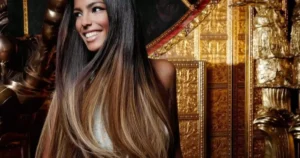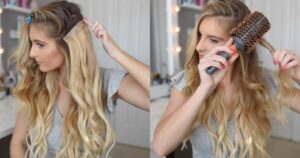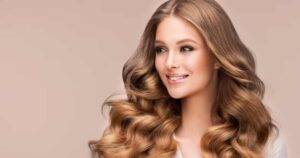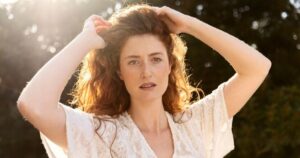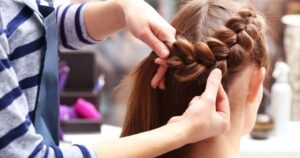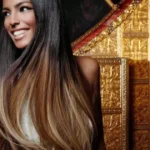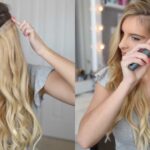An outline about blonde hair is a structured plan or summary that organizes key information and details related to the characteristics, care, and styling of blonde hair.
As we journey through life, one intriguing question often crosses our minds: “What color does blonde hair turn as we age?” This natural transformation in hair hue has piqued the curiosity of many. In this outline, we’ll delve into the fascinating science behind how blonde locks evolve over time, shedding light on this captivating aging process.
As people with blonde hair age, their hair may gradually darken. This natural phenomenon occurs due to a decrease in melanin, the pigment responsible for hair color. Blonde hair can turn to shades of light brown or even gray over time. The exact color change varies from person to person, but it’s a common occurrence as part of the aging process.
Hair color changes with age
As people get older, their hair color often changes. It’s quite common to see gray or white hairs appearing over time. This happens because the cells in our hair follicles produce less melanin, the pigment responsible for hair color.
As a result, new hairs grow in with less color, giving them a lighter or white appearance. This natural process is a part of aging, and it’s different for everyone. Some people experience this change earlier than others, but it’s a normal and natural part of the aging process.
Blonde hair transformation as people grow older
As people grow older, their blonde hair can undergo a transformation. In many cases, natural blonde hair may gradually darken over time, taking on shades of light brown or even gray.
This change in hair color is often due to a decrease in the production of melanin, the pigment responsible for hair color. While some individuals may choose to embrace their changing hair color, others opt to use hair dyes to maintain their preferred blonde shade.
Common Changes in Blonde Hair Color

1. Darkening with age: Many people with naturally blonde hair may notice that their hair darkens as they get older. This is often due to a decrease in the production of the pigment responsible for blonde hair.
2. Sun exposure: Exposure to the sun can lighten blonde hair and may lead to a sun-kissed or beachy look. However, excessive sun exposure can also cause hair to become dry and damaged.
3. Color fading: Blonde hair can sometimes become brassy or develop yellow or orange undertones, especially if it’s exposed to hard water, chlorine, or certain hair products. To maintain a cool blonde tone, regular toning and using purple shampoos can help.
4. Root regrowth: Natural root regrowth is a common change in blonde hair color, especially for those who dye their hair. Regular touch-ups or root maintenance may be needed to keep the color consistent.
5. Gray hair: As people age, blonde hair may start to show signs of graying. This can be managed with hair dyes or highlights to blend the gray with the blonde.
6. Color maintenance: Keeping blonde hair looking fresh often requires regular salon visits or at-home care to address changes in color, maintain vibrancy, and prevent damage.
Managing Blonde Hair Color Changes
1. Consult a Professional: Start by consulting a hairstylist or color specialist to discuss your desired blonde hair color change and how to hide colored hair. They can provide expert advice and ensure the best results.
2. Choose the Right Shade: Work with your stylist to select the ideal shade of blonde that complements your skin tone and fits your style. Consider factors like warm or cool tones to find the perfect match.
3. Maintain Regular Touch-Ups: Blonde hair color can fade over time, so schedule regular touch-up appointments to maintain the vibrancy of your color. These touch-ups can help prevent unwanted brassy tones.
4. Use Color-Safe Products: Invest in color-safe shampoo and conditioner to extend the life of your blonde hair color. These products are formulated to protect and nourish your hair while preserving the color.
Factors influencing hair color change
| Factor | Description |
| Genetics | Inherited genes determine your natural hair color. |
| Aging | Hair often naturally lightens or grays with age. |
| Sun Exposure | UV rays can lighten hair and cause fading. |
| Chemical Treatments | Hair dyes, bleach, and perms can alter color. |
| Hormonal Changes | Hormonal shifts during pregnancy can affect hair. |
| Health Conditions | Some illnesses or medications may impact color. |
| Environmental Factors | Pollution and water quality can affect hair color. |
Hair care with aging

As we age, taking care of our hair becomes increasingly important. Aging can lead to changes in hair texture, such as thinning and graying. To maintain healthy and vibrant hair, it’s essential to use gentle shampoos, and conditioners, and avoid excessive heat styling.
Regular trims can help manage split ends, and a balanced diet rich in nutrients can promote strong hair. Stay hydrated and protect your hair from the sun. With proper care, you can enjoy beautiful hair at any age.
Frequently Asked Questions
Does blonde hair naturally turn gray or white as you get older?
Blonde hair can gradually transition to gray or white as a person ages. The exact color change can vary based on genetics and individual factors.
Can blonde hair turn darker with age instead of lighter?
In some cases, blonde hair may appear to darken as you get older due to a decrease in natural pigment production. This can result in a shift toward a light brown or ashy blonde color.
Is it common for blonde hair to become dull or lose its vibrancy over time?
– Yes, blonde hair can lose its vibrancy and appear dull as it ages. Exposure to environmental factors like sun and pollutants can contribute to this change.
What factors influence how blonde hair changes with age?
Genetics plays a significant role in how blonde hair transforms with age. Additionally, lifestyle, diet, and hair care practices can influence the overall condition and color of your hair as you get older.
Are there ways to maintain the brightness of blonde hair as you age?
Using appropriate hair care products, protecting your hair from sun damage, and avoiding excessive heat styling can help maintain the brightness of blonde hair as you grow older. Regular trims and proper hydration can also contribute to healthier-looking blonde hair.
Conclusion
People’s age and blonde hair may undergo natural changes. Many individuals with blonde hair tend to darken or experience a subtle shift in color over time. This transformation can be influenced by various factors such as genetics and exposure to the sun.
While some may retain their blonde hues, others may find their hair turning slightly darker or acquiring hints of gray. Ultimately, the aging process affects everyone differently, and blonde hair’s evolution can vary from person to person.

